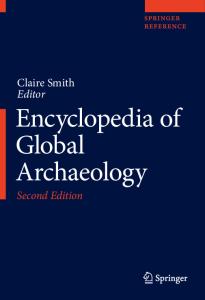Cambodia: Cultural Heritage Management
- PDF / 31,325,471 Bytes
- 932 Pages / 504.567 x 720 pts Page_size
- 73 Downloads / 327 Views
Cahokia Julie Zimmermann Holt Department of Anthropology, Southern Illinois University Edwardsville, Edwardsville, IL, USA
Introduction Cahokia is the largest and most complex archaeological site north of Mexico; indeed, it was probably one of the largest cities in the world at its peak around CE 1200 (Fig. 1). Because of its “outstanding universal value,” it is recognized by UNESCO as a World Heritage Site. To the local community, Cahokia is known as “Cahokia Mounds” because of the many mounds located there. To the archaeological community, however, there is a much greater story hidden below the modern ground surface. While archaeologists have studied Cahokia for much of the past century, it was only with interstate highway construction beginning in the 1970s that serious attention was paid to the smaller sites that supported Cahokia. They too tell an important part of Cahokia’s story. The “downtown” portion of Cahokia can be visited at Cahokia Mounds State Historic Site in Collinsville, Illinois.
Definition Lying across the Mississippi River from modern day St. Louis, Cahokia in its heyday served as
a cosmopolitan gateway (Kelly 1991) just as historic St. Louis did. As many as 20,000 people may have lived at Cahokia, but most visible to the casual visitor today are the mounds they built. At least 120 mounds have been recorded at Cahokia, the largest of which, Monks Mound (Fig. 2), is approximately 100 ft tall and has a footprint of approximately 17 acres (Fowler 1997; Dalan et al. 2003). Other monumental features of the site include a palisade and so-called woodhenges.
Key Issues/Current Debates/Future Directions/Examples Cahokia is situated in the heart of the American Bottom, a vast and rich expanse of Mississippi River floodplain (Iseminger 2010). Mobile hunter-gatherers “camped” at Cahokia as early as the Late Archaic period (3500–1000 BCE), gathering nuts, hunting deer and other native fauna, and fishing in nearby Cahokia Creek and backwater lakes. However, even at this early date, inhabitants of the American Bottom probably experimented by growing native plants such as squash (Cucurbita pepo) and goosefoot (Chenopodium berlandieri). Cahokia was again occupied during the Late Woodland Patrick phase (CE 700–900). At this time, Cahokia was probably just one of a number of small horticultural villages dotting the American Bottom. Their inhabitants grew squash, goosefoot, and a host of
C. Smith (ed.), Encyclopedia of Global Archaeology, DOI 10.1007/978-1-4419-0465-2, # Springer Science+Business Media New York 2014
C
1092
Cahokia
Cahokia, Fig. 1 Downtown Cahokia, c. CE 1200 (Courtesy of Cahokia Mounds State Historic Site. Painted by William R. Iseminger)
Cahokia, Fig. 2 Monks Mound, Cahokia (Courtesy of Cahokia Mounds State Historic Site)
Cahokia
other native plants in their gardens. A newly introduced technology, the bow and arrow, would have improved the efficiency of hunting. After CE 900, maize was brought to the American Bottom and quickly became a staple, yet Cahokians and their neighbors cont











